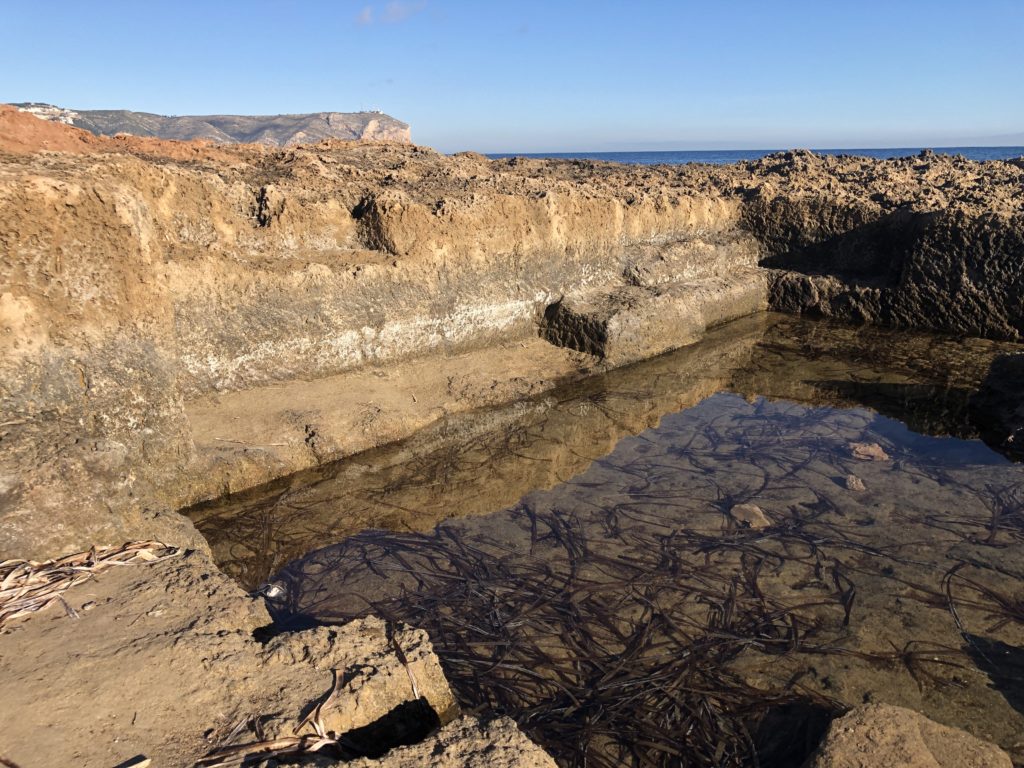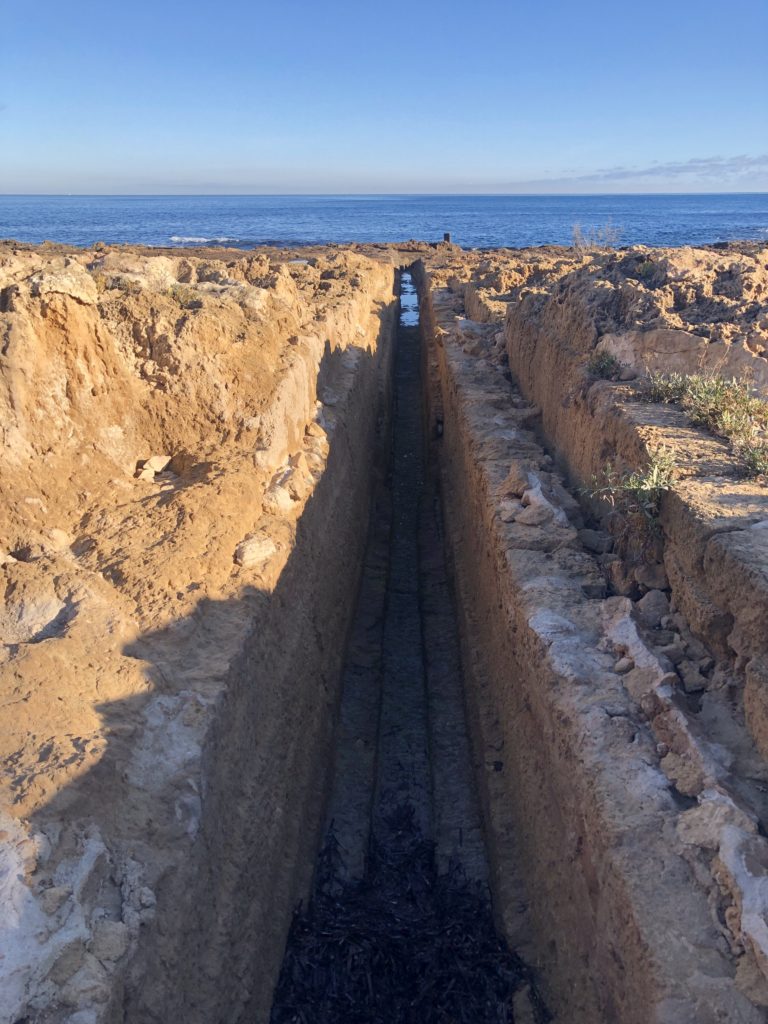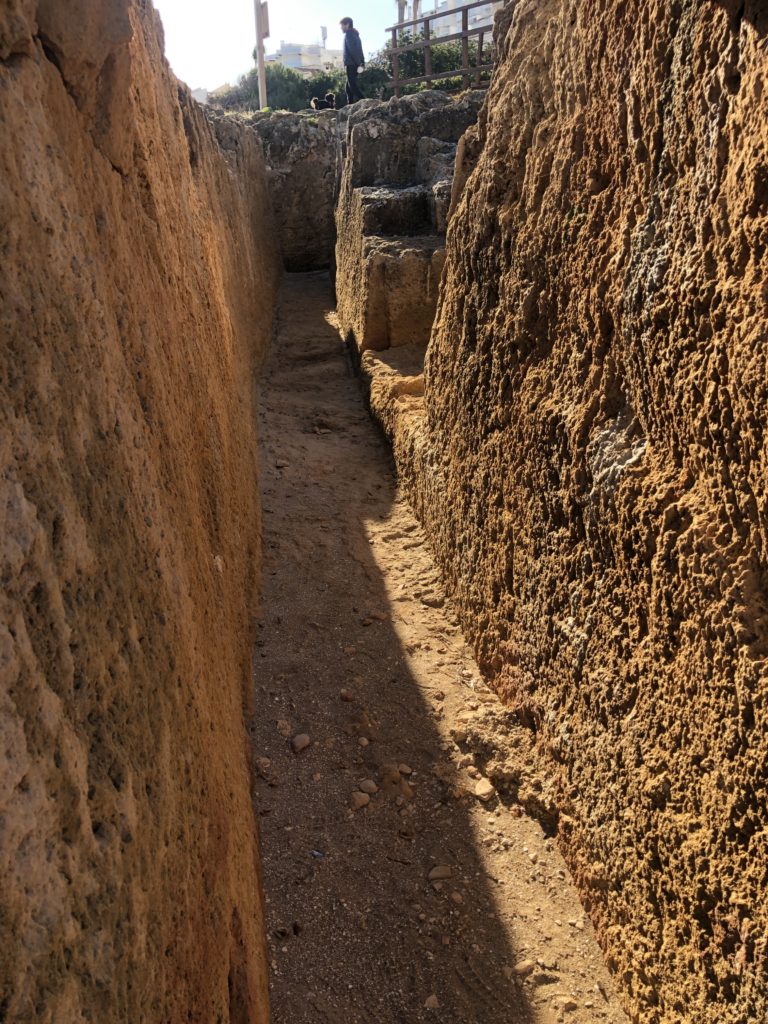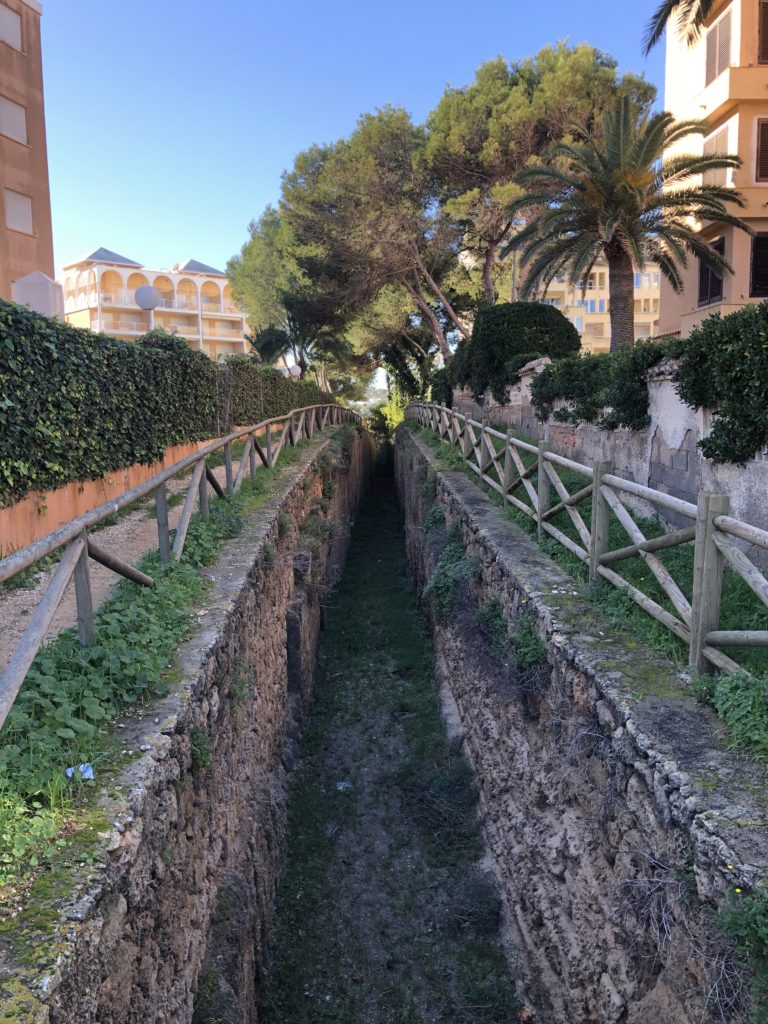Roman Fish Salting in the Mediterranean

For years I heard about Roman pisciculture baths near the sea in Spain and I thought that this is where they would keep fish for eating, like they did in medieval Europe. That idea is wrong. The pisciculture that you have near Javea, Cadiz, and other parts of the Mediterranean coast were for the production of Garum and other salted fish versions.


If you walk by the coast you can see this channel, and you can even walk along it. If you look out to see it looks like this. If you look the other way it has been filled in and exploration would require excavation, and that would require a permit. This is one of the smaller channels.

The channels are deep enough for me to stand in. The experience is interesting because they block the sound of the sea. Someone who has studied the process in depth should produce sketches to give us an idea of how this would have looked. I feel no need to know how it smelled.

This channel Is at least two meters wide and three or more meters deep. I don’t know which way water would have flowed.
You can see one of the tanks in this satellite image.
Another satellite image to give you some context
For a better understanding of Fish satling during Roman times I recommend reading this paper. .
The answer to the question of why the really large salting factories are found in the western
Mediterranean, Brittany and the Black Sea, but not in the Eastern Mediterranean
probably lies in the fact that the large-scale factories were designed to handle the
massive catches of migratory species along particular routes. They are therefore found
chiefly on the key migration routes along the Straits of Gibraltar and the North
African coast; through the Kimmerian Bosphoros; and in the Bay of Douarnenez
(Brittany) where there are migrant shoals of sardinesQuantification of fish-salting infrastructure capacity in the Roman world
The site is accessible on foot, as long as you are wearing good shoes.
